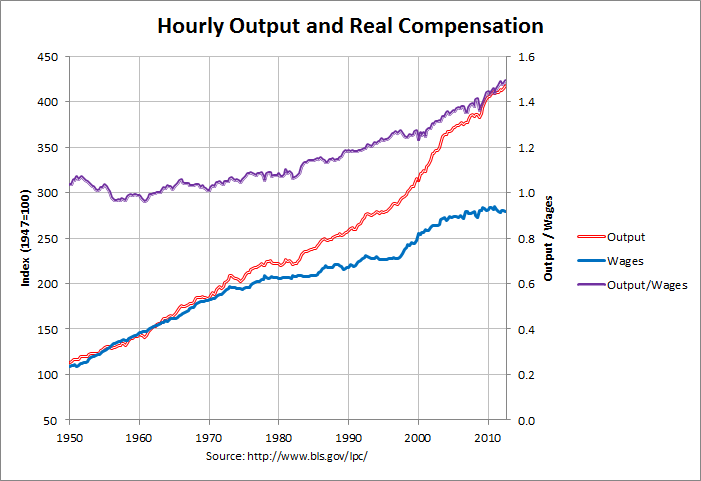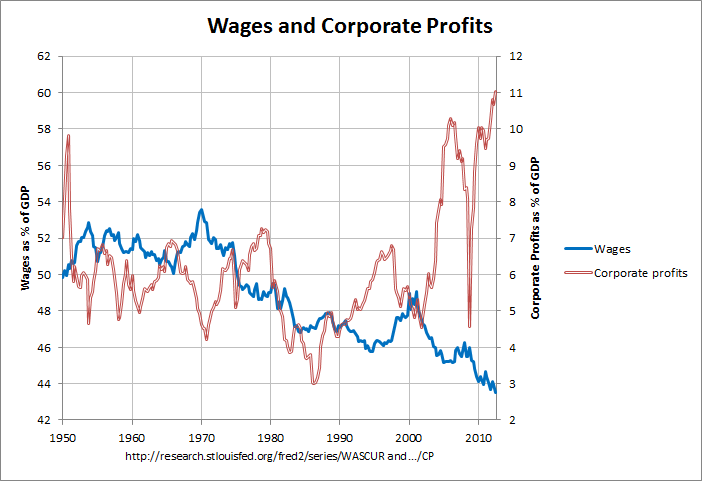On Dec. 30th, the Wall Street Journal ran an editorial titled
"Stephens: Obama's Envy Problem". The editorial was written by the WSJ's Bret Stephens and begins as follows:
As he came to the end of his awful year Barack Obama gave an awful speech. The president thinks America has inequality issues. What it has—what he has—is an envy problem.
Further on, Stephens states:
Mr. Obama tried to prove that in his speech, comparing present-day income with that halcyon year of 1979: "The top 10 percent no longer takes in one-third of our income—it now takes half," he said, suggesting that the rich are eating a larger share of the national pie. "Whereas in the past, the average CEO made about 20 to 30 times the income of the average worker, today's CEO now makes 273 times more. And meanwhile, a family in the top one percent has a net worth 288 times higher than the typical family, which is a record for this country."
Here is a factual error, marred by an analytical error, compounded by a moral error. It's the top 20% that take in just over half of aggregate income, according to the Census Bureau, not the top 10%. That figure is essentially unchanged since the mid-1990s, when Bill Clinton was president. And it isn't dramatically different from 1979, when the top fifth took in 44% of aggregate income.
Stephens would have done well to check Obama's sources before trumpeting the superiority of his own numbers. Paul Krugman gives the following explanation on his blog:
What’s going on here? Stephens is citing the Census data, which everyone who knows anything about inequality knows has a problem with very high incomes thanks to “top-coding”. The Piketty-Saez data, which use tax returns to estimate income shares, do indeed show the top 10 percent receiving half the income, up from 42 percent in 1995. Maybe you don’t like those estimates, but Obama made no mistake – while Stephens did.
An article titled "Recent Census Data Significantly Understate The Increase in Income Disparities" explains this in more detail:
In contrast, the Census data are based upon a voluntary population-based survey. They cover virtually the entire population. However, the standard data on income that the Census Bureau publishes do not include capital gains income, which is a large source of income for high-income individuals. The Census Bureau also places an upper limit on the amount of certain types of income it counts for any individual, disregarding income above these amounts; this is done for confidentiality and other reasons. For example, the highest salary that can be recorded is $999,999. Anyone with a salary above this amount is recorded as having a salary of $999,999. As a result of these and other factors, the Census data significantly understate the income of those at the top of the income spectrum as well as recent increases in income among this group.
In fact, Table A3 of a spreadsheet on the Piketty-Saez site shows the income share of the top 10 percent to have risen from 34.21% in 1979 to 50.42% in 2012. Hence, Obama's statement that "The top 10 percent no longer takes in one-third of our income—it now takes half" was correct.
Despite Krugman's contention that "everyone who knows anything about inequality knows [the Census data] has a problem with very high incomes", this error might be understandable. However, Stephens then goes on to make an error that is just astonishing. He continues:
Besides which, so what? In 1979 the mean household income of the bottom 20% was $4,006. By 2012, it was $11,490. That's an increase of 186%. For the middle class, the increase was 211%. For the top fifth it's 320%. The richer have outpaced the poorer in growing their incomes, just as runners will outpace joggers who will, in turn, outpace walkers. But, as James Taylor might say, the walking man walks.
Stephens appears to be using the Census data from this spreadsheet of Table H-3 on the Census website as it exactly matches his numbers. The following numbers are from that spreadsheet:
Table H-3. Mean Household Income Received by Each Fifth and Top 5 Percent
(in current and 2012 CPI-U-RS adjusted dollars)
Lowest Second Third Fourth Highest Top 5
Year fifth fifth fifth fifth fifth percent
-------- -------- -------- -------- -------- -------- --------
Current Dollars
1979 4,006 9,964 16,428 24,108 43,265 65,984
2012 11,490 29,696 51,179 82,098 181,905 318,052
% Change 186.8 198.0 211.5 240.5 320.4 382.0
Lowest Second Third Fourth Highest Top 5 Top 5
Year fifth fifth fifth fifth fifth percent percent*
-------- -------- -------- -------- -------- -------- -------- --------
2012 Dollars
1979 11,808 29,369 48,422 71,060 127,526 194,491 214,767
2012 11,490 29,696 51,179 82,098 181,905 318,052 433,937
% Change -2.7 1.1 5.7 15.5 42.6 63.5 102.0
Source: U.S Census Bureau, Table H-3 (except last column)
* last column from Piketty-Saez, Table A6
As can be seen, the spreadsheet gives the incomes in "current dollars" and in "2012 dollars". The latter measure adjusts the incomes for inflation, converting all of the numbers to "2012 dollars". The former measure (current or nominal dollars) is NOT corrected for inflation. This is the measure that Stephens saw fit to use. If one uses the figures that are corrected for inflation, however, the incomes of the lowest fifth actually went down 2.7 percent from 1979 to 2012, not up by 186% as Stephens contends.
Regarding Stephens' choice of non-inflation-corrected numbers, Miles Kimball, Professor of Economics and Survey Research at the University of Michigan, writes the following:
It is hard to read the 186% figure in this passage in any way that is not egregiously misleading. The gist of the argument is that a rising tide is lifting all boats, so that the passage seems to suggest that the bottom 20% have been lifted by 186%. Even on the editorial page, the Wall Street Journal’s journalistic standards should be higher.
Correcting dollar figures for inflation is a concept so basic that it is likely known by every living economist. In fact, it is likely known by the great majority of living adults. How could Stephens and the editorial board at the Wall Street Journal have missed it? As Kimball says, it's hard not to read this as "egregiously misleading". It will be interesting to see if Stephens or the Wall Street Journal publish a correction to this egregious mistake. That might give some indication as to whether they are concerned about their reputations or are simply pushing a point of view by whatever means possible.
Do Publications Have Any Responsibility to Screen Their Editorials? (Part 2)

